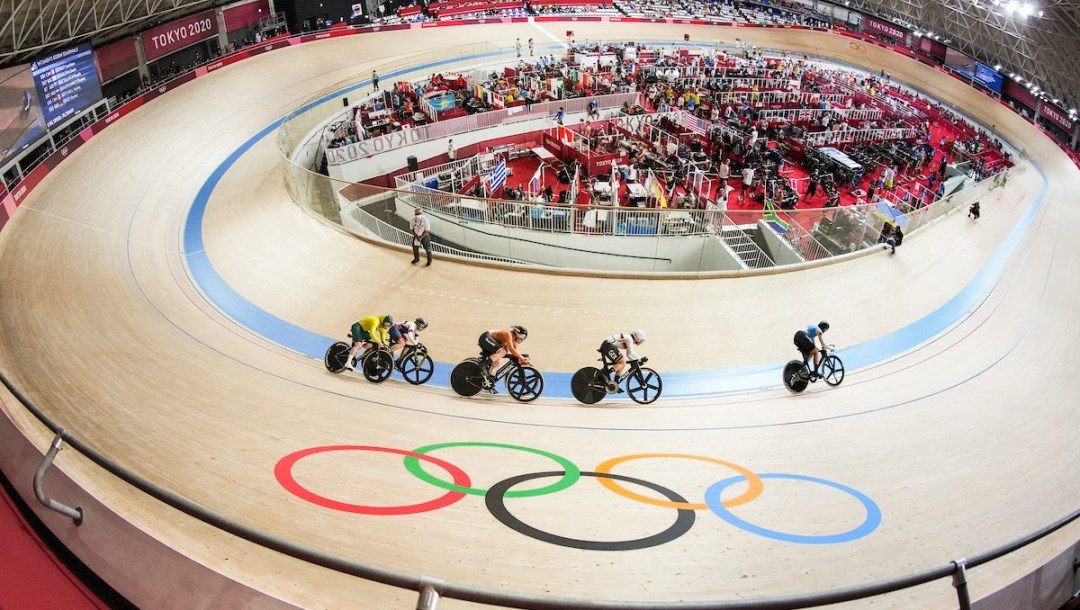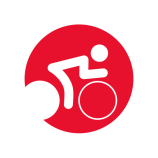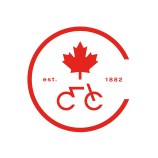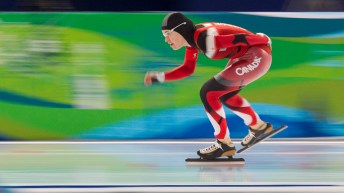Cycling – Track
Team Canada Medal Count
Sport Overview
Track Cycling at Paris 2024
Venue: Saint-Quentin-en-Yvelines Velodrome
Competition Dates: August 5-11 (Days 10-16)
Events: 12 (6 men, 6 women)
There are six different events on the Olympic program, all of which have men’s and women’s events.

Sprint: A tactical one-on-one match race over three laps. The knockout competition starts at the 1/32 finals. Beginning in the quarterfinals, the matchups are best-of-three races between the two riders. Watch for the cat-and-mouse tactics as the riders in each race pedal slowly for two laps while carefully jockeying for position before deciding when to break for the final sprint to the finish.
Team Sprint: A match race in which two teams of three riders begin on opposite sides of the track and race over three laps. After completing a lap, the lead rider of each team pulls out of the race, meaning only one rider for each team finishes the race.
Keirin: An eight-lap sprint race with usually six riders on the track at one time. Riders begin behind a motorized pace bike which gradually accelerates from 30km/h to 50km/h before pulling off the track with three laps to go to allow an all-out sprint to the finish.
Team Pursuit: A 4000m match race in which two teams of four riders begin on opposite sides of the track. One team tries to catch the other team, or at least post the fastest time, to advance to the medal races. Teams ride in single file with riders taking turns at the lead while the others draft behind.
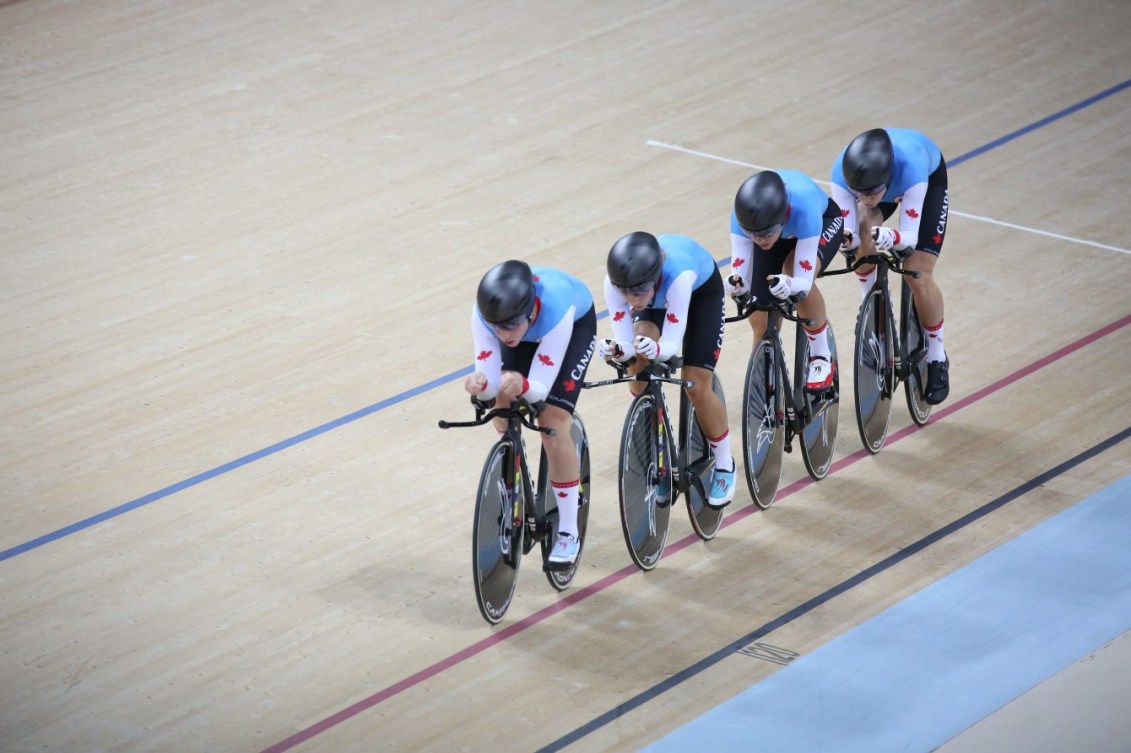
Omnium: This multi-discipline individual event features riders accumulating points for their placements in four different endurance races on one day. They begin with the mass start scratch race (40 laps/10km for men, 30 laps/7.5km for women) in which the first cyclist to cross the line wins. That is followed by the tempo race (40 laps/10km for men, 30 laps/7.5km for women). After the first four laps, there are intermediate sprints with one point awarded to the cyclist who crosses the line first each lap. Next is the mass start elimination race in which the last rider to cross the finish line every two laps is eliminated. The event ends with the points race (100 laps/25km for men, 80 laps/20km for women). Riders add points to their running total during the sprints every 10 laps and by gaining laps on the field.
Madison: A relay race (120 laps/30km for men, 80 laps/20km for women) featuring teams of two riders in which points are awarded on intermediate sprints. Every 10 laps, the first four riders to cross the line earn points. Teams earn an additional 20 points when they lap the field, while teams who are lapped lose 20 points. While one team member is racing, the other slows down to take a rest before returning to the action with a hand touch from their teammate.
Canada’s Olympic Track Cycling History (Pre-Paris 2024)
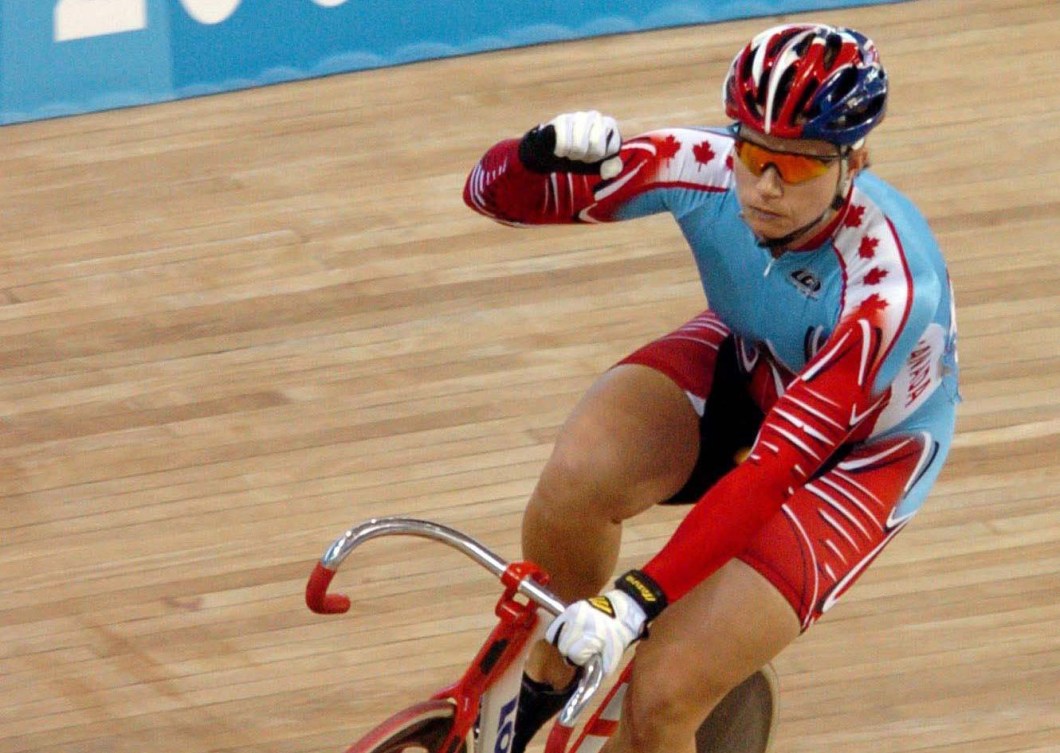
Canada has two Olympic gold medals in track cycling, both in the women’s sprint. Lori-Ann Muenzer won Canada’s first ever Olympic gold in any cycling discipline when she won the women’s sprint at Athens 2004. It was certainly an unexpected victory for the 38-year-old, who was the oldest competitor in the field and racing on wheels borrowed from the French and Australian teams after the only set she could afford had blown apart.
Kelsey Mitchell was victorious in the women’s sprint at Tokyo 2020. She had only started training as a track cyclist in 2018 after having had her potential identified via RBC Training Ground. Tokyo 2020 marked the first time in 25 years that Canada won multiple track cycling medals at one Olympic Games. Lauriane Genest became Canada’s first ever Olympic medallist in the keirin when she won bronze in the women’s race.
Canada’s most decorated Olympic cyclist is Curt Harnett, who won silver in the 1km time trial at Los Angeles 1984 before winning back-to-back bronze medals in the sprint at Barcelona 1992 and Atlanta 1996. At those latter Games, Brian Walton added a silver medal in the points race.
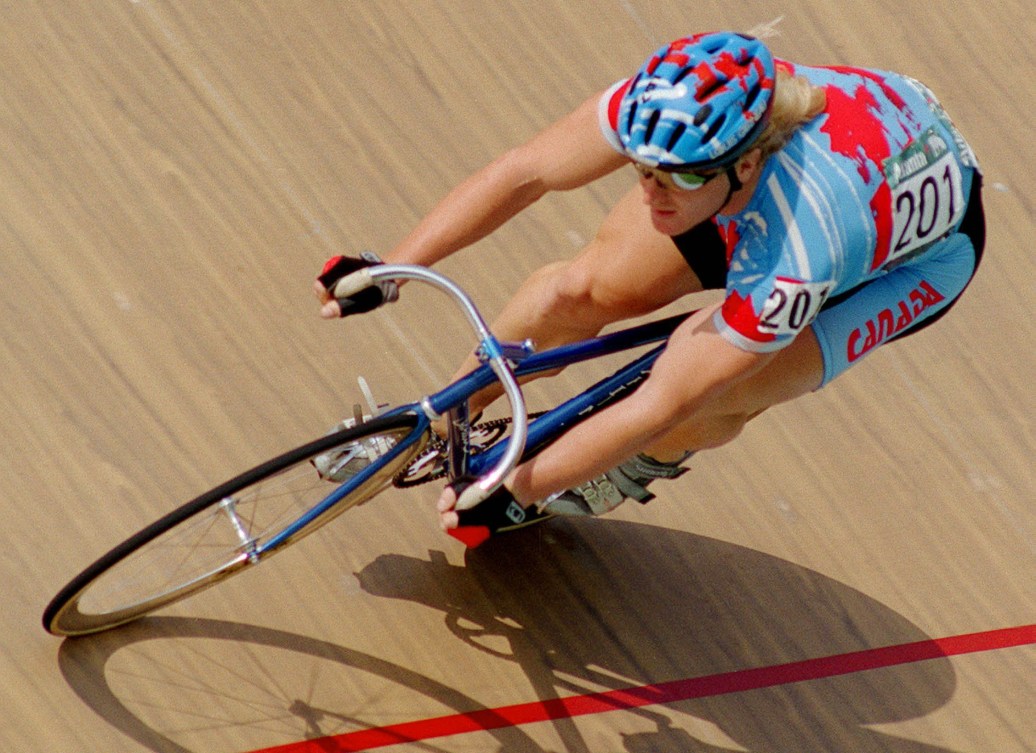
Canada won back-to-back medals in the women’s team pursuit at London 2012 and Rio 2016. Gillian Carleton, Jasmin Glaesser and Tara Whitten captured bronze in the Olympic debut of the event at London 2012. Canada added another bronze in the event at Rio 2016 thanks to Georgia Simmerling, Kirsti Lay, Allison Beveridge, Laura Brown, and Glaesser.
Canada’s first Olympic track cycling medal was a men’s team pursuit bronze won at London 1908.
Olympic Track Cycling History
Track cycling is one of the original Olympic sports, first appearing on the program at Athens 1896. It has been included at every Olympic Summer Games since, with the exception of Stockholm 1912 after the city’s velodrome was dismantled to make room for the new Olympic Stadium.
There have been many different events featured in Olympic track cycling over the years, including multiple varied distance races. For nine decades, track cycling was only contested by men at the Olympic Games. The first women’s event – the individual sprint – was finally included at Seoul 1988. More women’s events were added gradually over the next few Games, but it wasn’t until London 2012 that men and women would compete in the same number and type of events. The current program of events began at Tokyo 2020.
Canadian Medallists
| Event | Athlete | Finish | Games |
|---|---|---|---|
| Sprint - Women | Lori-Ann Muenzer | Gold | 2004 Athens |
| Sprint - Women | Kelsey Mitchell | Gold | 2020 Tokyo |
| 1km Time Trial - Men | Curt Harnett | Silver | 1984 Los Angeles |
| Points Race - Men | Brian Walton | Silver | 1996 Atlanta |
| Team Pursuit - Men | Frederick McCarthy, Walter Andrews, William Anderson, William Morton | Bronze | 1908 London |
| Sprint - Men | Curt Harnett | Bronze | 1992 Barcelona |
| Sprint - Men | Curt Harnett | Bronze | 1996 Atlanta |
| Team Pursuit - Women | Gillian Carleton, Jasmin Glaesser, Tara Whitten | Bronze | 2012 London |
| Team Pursuit - Women | Georgia Simmerling Jasmin Glaesser Kristi Lay Allison Beveridge Laura Brown | Bronze | 2016 Rio |
| Keirin - Women | Lauriane Genest | Bronze | 2020 Tokyo |

